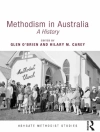Metal foams are lightweight materials inspired by structures in nature. They are defined as three-dimensional frameworks with interconnected porous structures – nano-, meso- and macropores – that combine essential physical and mechanical features of metals with a highly porous nanoarchitectures. These types of porous materials can be used in a variety of different scientific fields and, as a result, have gained increasing attention in recent years. Given the heightened academic and industrial interest in efficient materials, sparked by the high demand for new clean technologies, this book is more relevant and timelier than ever.
Jadual kandungan
- Introduction
- Methodologies to Prepare Metal Foams
- Functionalization of Metal Nanofoams
- Property Characterization of Metal Foams
- Supercapacitor Applications
- Metallic Foams for Modern Battery Applications
- Energy-related Electrocatalysis Applications
- Challenges and Outlook
Mengenai Pengarang
Fátima Montemor, received her Ph D from the technical University of Lisbon and, currently, she is a Full Professor at Instituto Superior Técnico, Universidade de Lisboa at the Chemical Engineering Department. Over the last 10 years her scientific activities have been focused on 1) the development of functional and self-healing coatings for surface protection; 2) novel metal compound redox conductive coatings (including self-healing composites) for electrochemical energy storage in supercapacitors and construction of asymmetric electrochemical energy storage devices. She co-authored 17 book chapters, more than 290 scientific papers (scopus ID: 7004347821) and more than 300 presentations in international conferences.
Diana M Fernandes (DMF) received her Ph D in Chemistry (2010) by the University of Aveiro. She has co-authored 69 papers in international peer-reviewed journals (h-index of 25), 4 book chapters, and more than 90 communications in international/national meetings.
Alberto Adán-Más (AAM) obtained his masters in Micro- and Nanotechnology at the University of Cambridge in 2011, where he became interested in graphene-based materials and supercapacitor technology. He has published over 10 articles in international peer-reviewed journals and works in the areas of electrochemistry, materials science and nano-materials for electrochemical energy storage.
Ana Catarina Alves completed her master’s degree in chemistry at FCUL (2019), with the thesis entitled ‘Synthesis and characterization of abiotic electrocatalysts based on reduced graphene oxide for oxygen reduction reaction’. Currently, CA attends Ph D degree with a FCT grant in Corrosion Science and Surface Engineering research group at Centro de Química Estrutural at Instituto Superior Técnico, University of Lisbon. Her work is on the development of self-healing materials based on manganese-dioxide materials for supercapacitor applications.
Gabriel Garcia Carvalho graduated in Chemical Engineering at Instituto Superior Técnico, obtaining a master’s (MSc) degree. He currently continues his studies by conducting a Ph D in Chemical Engineering, is a graduate researcher in the Corrosion Science and Surface Engineering research group at CQE of the same institution.
Inês S. Marques is a Ph D student in Sustainable Chemistry at the Faculty of Sciences of the University of Porto, where she completed her BSc in Chemistry in 2019 and MSc in Chemistry in 2021.












